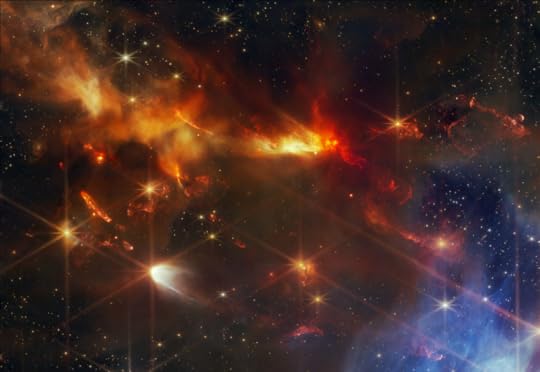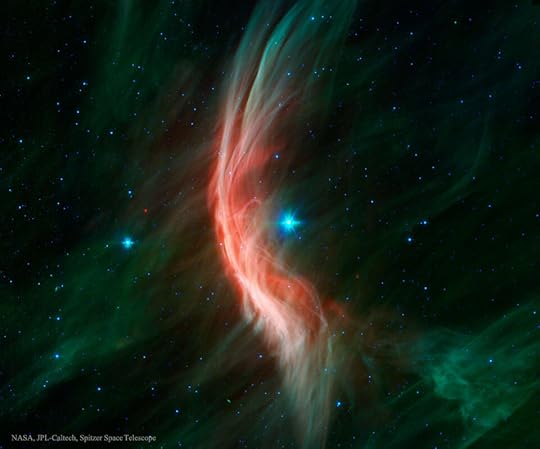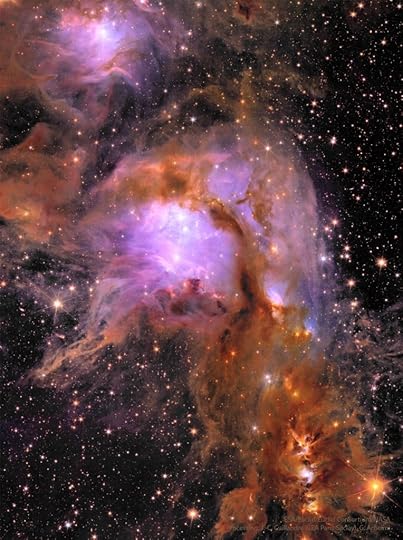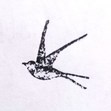Space for Inspiration
I’ve talked many times about how drawing on your real environment is a great way to get inspiration for storytelling. You need those experiences of the fresh wind in your hair, the sight of towering castle walls, the way light plays off a flowing river, to be able to truly capture those things in words.
So what the hell do you do when you’re writing sci-fi?
Because while we’d all like to, there are very few people who have actually been to space, who have those same lived experiences of what they would be writing about. You need other means of inspiration for subjects and settings like that. You need data. Images, footage, the sort of thing you can’t really whip up at home – even if you’re out in the back garden with a telescope, seeing distant worlds isn’t the same as setting foot on them, in the way that you can if you’re writing about more terrestrial environments. Not that terrestrial environments can’t feel alien, of course – where would science-fiction be without the gravel quarries of Wales, or the canyons of Morocco that I’ve walked, and then tweaked, myself for stories. But sometimes you need a better look, provided by better experts.
Happily for we poor SF writers, the actual scientists of the world are generous with their findings. Pretty much everything NASA finds is made public, from images to raw data. If you need specific stuff to back up an idea you’ve already had then you can peruse the photos from Hubble or the James Webb at your leisure. I’ve done this before and I’ll certainly do it again.
But if you just need general inspiration, or to get in the mood, then there’s only one place to go. APOD.
 Here be dragons. Space dragons.
Here be dragons. Space dragons.Protostellar Outflows in Serpens
Image Credit: NASA, ESA, CSA, STScI, Klaus Pontoppidan (NASA-JPL), Joel Green (STScI)
NASA’s Astronomy Picture Of the Day has been going since 1995, and the only thing that’s really changed about it since is the quality of the images they post. Every day, a new astronomical image or video is posted and explained in the perfect level of everyman’s detail, with external links and tangents galore. Every day, a new phenomenon, from nebulae light years away to the phases of the moon, all presented simply and effectively.
 The image from the day I was born in 1995. Space telescopes have come a long way since then, haven’t they?
The image from the day I was born in 1995. Space telescopes have come a long way since then, haven’t they?M1: Polarization of the Crab
Credit: Hale 5 Meter Telescope
Copyright: AATB, Caltech, David Malin, Jay Pasachoff
It’s a brilliant thing for anyone even slightly interested in space. There’s so bloody much of it, after all, that there are millions of things out there that you’ll never have seen or heard of – but APOD can bring one right to you every day. For me it’s absolutely perfect. Just taking a few minutes every morning to experience a bit of space, to let my mind be among the stars, is great. The sheer number of ideas I get from reading about these crazy celestial phenomena is even better. That nebula looks like a dragon! How do comets work? What the hell is a runaway star and how can I immediately write a story about one, please?
 I might have a piece in need of trimming and wrapping up…
I might have a piece in need of trimming and wrapping up…Zeta Oph: Runaway Star
Image Credit: NASA, JPL-Caltech, Spitzer Space Telescope
I first discovered APOD years ago, and while I looked at it every day, at some point I got distracted by life and it fell by the wayside. Then I found it again, and it’s become a little highlight of my morning routine. Get up, eat something, get ready to write – and, just for a few minutes, go to space.
 M78 from the Euclid Space Telescope
M78 from the Euclid Space Telescope
Image Credit & License: ESA, Euclid, Euclid Consortium, NASA; Processing: J.-C. Cuillandre (CEA Paris-Saclay), G. Anselmi
All the wonders of the universe, delivered right to your eyes, a day at a time. Who can say no to that?
All the above images are the property and copyright of NASA and the credited photographers.



